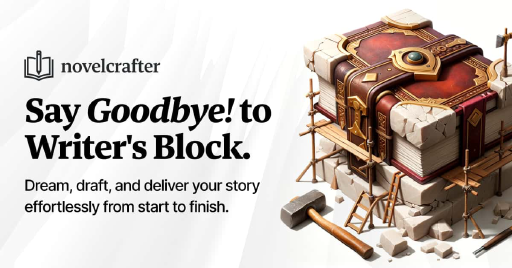Navigating the Publishing Jungle
Cracking the code of publishing your first book is like wrestling an octopus—slippery and complicated. Let’s break it down to make it as smooth as a morning coffee. You’re gonna discover how to lay a rock-solid foundation for your author adventure.
What’s up with Literary Agents?
Here’s the deal: literary agents are like your backstage pass to the book biz. They’re the bridge between you and the publisher, using their insider smarts to help score you that book deal. But don’t think just any agent will do; finding the right one is akin to finding your perfect pizza topping.
Hunting for an agent isn’t just about blanket emailing queries; it’s more like matchmaking. Does the agent groove with your genre? Do they have a history of selling stuff like yours? Knowing your market makes them pitch-perfect. Agents usually take a slice—about 15%—once they seal the deal, so choose wisely (Aspiring Author).
Before signing the dotted line with an agent, vibe check if they share your dream for your book. On the same page about hitting bestseller lists or getting the right publicity? You’ll sleep easier knowing you’re in sync.
Tricks to Nailing Query Letters
Let’s talk about the art of the query letter, your big chance to wow an agent. Think of it as a love letter but with less romance and more pizzazz. The trick is knowing which agents are likely to dig your kind of writing. This isn’t a one-size-fits-all gig; it’s a bespoke rendezvous (Tiffany Hawk).
Personalize those letters! Mention why you picked them out of the crowd and how your manuscript sings in their key. Tailored queries have been known to hit the jackpot, scoring a decent 58% request rate for more manuscript peeks (Tiffany Hawk).
Here’s a straightforward rundown for cooking up a killer querying strategy:
| Step | Action |
|---|---|
| Research Agents | Sniff out agents digging your genre vibe. |
| Personalize Queries | Tune your letter to match the agent’s heartstrings. |
| Explain Fit | Lay it out why your book fits their groove. |
| Follow Submission Guidelines | Respect their house rules for submissions. |
Grasping these insider tips on agents and rockstar querying can boost your odds and get you on that publishing path with some swagger. Hungry for more tips on sharpening your writing chops? Check out our dive into writing advice for new authors.
Crafting Your Manuscript
Hey there, future author! Ready to get cracking on that awesome manuscript of yours? You’ve got a story to tell, and this part is all about turning that spark into a published book. We’re gonna walk through setting some snazzy writing goals and chat about why an editor might just become your new best friend.
Writing Goals and Strategies
Let’s talk goals. We all know it’s easy to lose steam, especially when Netflix is calling your name. But setting tangible goals keeps you chugging along. Maybe you’ll shoot for cranking out a certain number of words each day or locking down a chapter every week. Having clear targets makes it easier to see how far you’ve come and where you’re headed. Here are a few ways to keep that writer mojo going:
 What Poetry Feels Like
What Poetry Feels Like| Goal Setting Method | What’s the Deal |
|---|---|
| Daily Word Count | Shoot for a certain word count daily. Perfect for building your manuscript bit by bit. |
| Weekly Chapter Target | Knock out a chapter or section each week and watch your story grow. |
| Time-Based Writing | Set aside some regular writing time each day or week and get scribbling. |
Keeping a steady groove with your writing is like having a compass in the world of words—it points you in the right direction. Check out more tricks on crafting a writing habit and story outlining if you need a little boost.
Importance of Professional Editing
Once that manuscript’s wrapped up, it’s time to buddy up with a pro editor. These folks work their magic with words, polishing your draft, fixing wonky grammar, and helping the story shine. With their insights, you’ll have readers hooked from page one.
An editor will zero in on stuff like:
| Editing Focus | Why It Matters |
|---|---|
| Grammar and Punctuation | Smooth out the rough edges for a smart, polished look. |
| Clarity and Structure | Keeps your story flowing nicely, making it easy to read. |
| Content Accuracy | Checks your facts, keeping the story tight and believable. |
Getting that extra eye on your work makes a big difference, especially if you’re dreaming of a successful writing gig (Palmetto Publishing). Besides, fresh perspectives can help you fine-tune your story to perfection.
As you dive into manuscript-making, keep your goals realistic, harness foolproof strategies, and never underestimate the power of a good edit. These steps are your ticket to mastering publishing your debut book, so jump in with both feet. Also, scope out some editing tips to gear up for the next big steps in your publishing adventure.
Choosing Your Publishing Path
Thinking about getting your first book out there? Well, you’ve got two main roads to take: the old-school traditional publishing way or the do-it-yourself self-publishing gig. Each comes with its own set of pros and cons.
Traditional Publishing vs. Self-Publishing
With traditional publishing, you’re hopping on board with big companies that handle a bunch of stuff for you—editing, distribution, and even some marketing. But don’t get too comfy; it’s kind of a tough crowd out there. You have to sweet-talk literary agents or publishers to get in. A lot of writers dream of this path because it feels like earning your stripes and getting that shiny badge of honor.
Self-publishing’s like getting behind the wheel of your own bookmobile. You call the shots on editors, cover art, and how you spread the word. It’s faster, but it means you’re the head honcho of hustle. Getting your book noticed can feel like shouting into a void unless you’ve got connections or a knack for marketing.
| Publishing Choice | Perks | Pitfalls |
|---|---|---|
| Traditional Publishing | Pro editing, marketing, distribution | Crowded field, slow-going |
| Self-Publishing | You’re the boss, quick release | You’re also the marketer-in-chief |
Marketing Considerations
No matter your path, you gotta nail the marketing game. If you go the traditional route, they’ve got book placement networks ready to roll, and it can seriously pump up your sales. Still, you’ll find yourself tweeting, updating your author site, and maybe signing a few copies yourself (Nathan Bransford).
Self-publishers, you’re on a marketing rollercoaster. Dive into social media, grow that mailing list, and maybe even splash some cash on ads to widen your reach. Digging into beginner writing tips and writing advice for new authors can sharpen your promo skills.
Deciding between traditional or self-publishing boils down to what you want, how much control you’re after, and how much elbow grease you’re ready to put into selling your book. Whether you take the road well-trodden or blaze your own trail, getting your head around these points will help steer you toward the right choice for your writing adventure.
Connecting With Literary Agents
Trying to woo literary agents feels a bit like a game of matchmaking. They’re the fairy godparents of the book world, turning your collection of words into a bound treasure. Getting in their good books (pun definitely intended) could make all the difference on your quest to get published.
Building Relationships
Breaking the ice with literary agents involves more than just firing off a generic query letter. It’s about schmoozing—building a real, mutually beneficial connection that helps your writing journey. Begin your agent hunt by scouting out those who’ve helped launch books similar to yours. If they’ve already shone in your genre, there’s a better chance they can work their magic with your manuscript too (Aspiring Author).
Want to leave a lasting mark? Pop by writers’ conferences, literary shindigs, or workshops where agents are likely to hang out. You get the chance to ditch the screen and introduce them to the actual you. Meanwhile, show agents some love on social media by interacting with their posts. And who knows? Your thoughtful comment might catch their eye.
After you’ve shot your shot via a query letter, don’t just sit there twiddling your thumbs. A friendly nudge in the form of a follow-up never hurt anyone. Some writers have tales of ghostly agents suddenly reappearing with interest after a little nudge. Who knew being pesky could work in your favor?.
Query Letter Personalization
Making your query shine is all in the personal touch. Kick things off by addressing the agent by name and giving a little speech about why you picked them over the rest of the pack. Connect your book to their current lineup and show what makes your story special. Dropping the right book titles they’ve repped doesn’t hurt either—it shows you did your homework (Tiffany Hawk).
Case in point, a juicy study pointed out that snazzing up your letters for each agent led to a cool 58% request rate for manuscript peeks. Kind of feels like sending them a love letter, but one that could actually land you a book deal.
Keep in mind as you go through this hoopla that forging strong links and tailoring each query gives you better odds in this tight-knit writing universe. For more ink-slinging guidance, check out beginner writing tips, or beef up your strategy with writing advice for new authors.
Publishing Process Insights
So, you’re diving into the publishing world, huh? Ready to transform your story into a book that’s ready to hit the shelves? Let’s get a grip on what it takes to polish up your manuscript and navigate the not-so-linear timeline of getting published.
Editing and Assessment
First up, let’s talk about smoothing out your manuscript. Editing is a big deal—no skipping this step. Once you’ve given it your personal editing touch, it’s time for an editorial review. This checkup tells you how much sprucing up your manuscript may need before it’s good to go. Every book’s different—some need a full makeover with developmental editing, copyediting, and proofreading, while others just need minor tweaks. Checking in with editorial experts ensures your book’s all set for readers.
Editing doesn’t stick to a strict timetable, though. An initial review might take about a week, while editing itself can chew through about two weeks per 50,000 words. It’s also your chance to play detective, seeing feedback, and making changes. And if the plan’s to make your book your golden ticket, professional editing isn’t something you can skimp on. Cost-wise, expect a one-pass copyedit to cost $0.03 to $0.19 per word, with a more in-depth content edit between $0.045 and $0.60 per word. Getting pro help is a smart move if you wanna stand out from the DIY scene and really nail that finished product.
| Type of Editing | Cost Range (per word) |
|---|---|
| One-pass Copyedit | $0.03 – $0.19 |
| Two-part Content Edit | $0.045 – $0.60 |
Publishing Timeline Realities
Next, let’s look at the clock and calendar for getting your book published. Your plans shift depending on the path you pick—traditional or self-publishing—and each brings its own timeline. Traditional publishing can take a while. With proposals, agents to charm, and perhaps a bit of waiting around, this path is more of a marathon. Self-publishing gives you faster control, but you still need to handle editing, covers, formatting, and yes, getting the word out.
Keep in mind that when you release your book might also depend on what trends and the time of year say. As you ride the publishing roller-coaster, stay flexible and realistic. Patience and adaptability are your best pals here. Curious to learn more? Dive into our friendly guides on developing a writing routine and sharpening your editing skills.
Embracing Marketing Strategies
When it comes to getting the word out about your book, marketing isn’t just a nice-to-have—it’s a must. The right strategies can connect you with readers, stir up excitement, and put your work on the map. Dive into this wild world with these savvy tips.
Book Promotion Tactics
Ready to put your book in the spotlight? Check out these sneaky yet effective ways to catch your readers’ eyes.
| Tactic | Description |
|---|---|
| Price Promotions | Slashing prices or giving away freebies can hook new readers. Try countdown deals or toss a freebie to make waves (BookBub Partners Blog). |
| Book Reviews | Getting folks to leave reviews on places like Amazon and Goodreads can really sway new buyers. More chatter equals more trust, and a bump in sales (BookBub Partners Blog). |
| Social Media Engagement | Jump onto Instagram, Twitter, and Facebook to shout about your book. Keep it fun and interactive—build a crew of followers who can’t wait for your next post. |
| Live Events | Hit up or host signings, readings, or panels to get your name out there. Nothing beats a face-to-face chat with the folks who love your work (BookBub Partners Blog). |
Mix and match these tactics to tailor your approach and really click with your audience.
Target Audience Engagement
Knowing who you’re writing for makes all the difference. Spend some time getting inside their heads to master your marketing moves.
- Identify Demographics: Pin down who’s picking up your book—their age, gender, likes, and how they get their reads can guide your game plan.
- Create Engaging Content: Whip up some blog posts, social media nuggets, or videos that tie into your book’s vibe. Writing romance? Dish out some advice on making characters melt hearts.
- Engage with Your Fan Base: Build lasting bonds with your readers through newsletters or social updates. Give ’em a peek behind the curtain with sneak peeks and exclusives to really bring them along for the ride.
For meatier marketing advice tailored to authors, peep our article on writing tips for self-publishing and roll out your marketing strategy with pride.


 Grab my poetry book, 'we're all just wanderers in the end' Here
Grab my poetry book, 'we're all just wanderers in the end' Here AD: Your Book Finally Written...
AD: Your Book Finally Written...